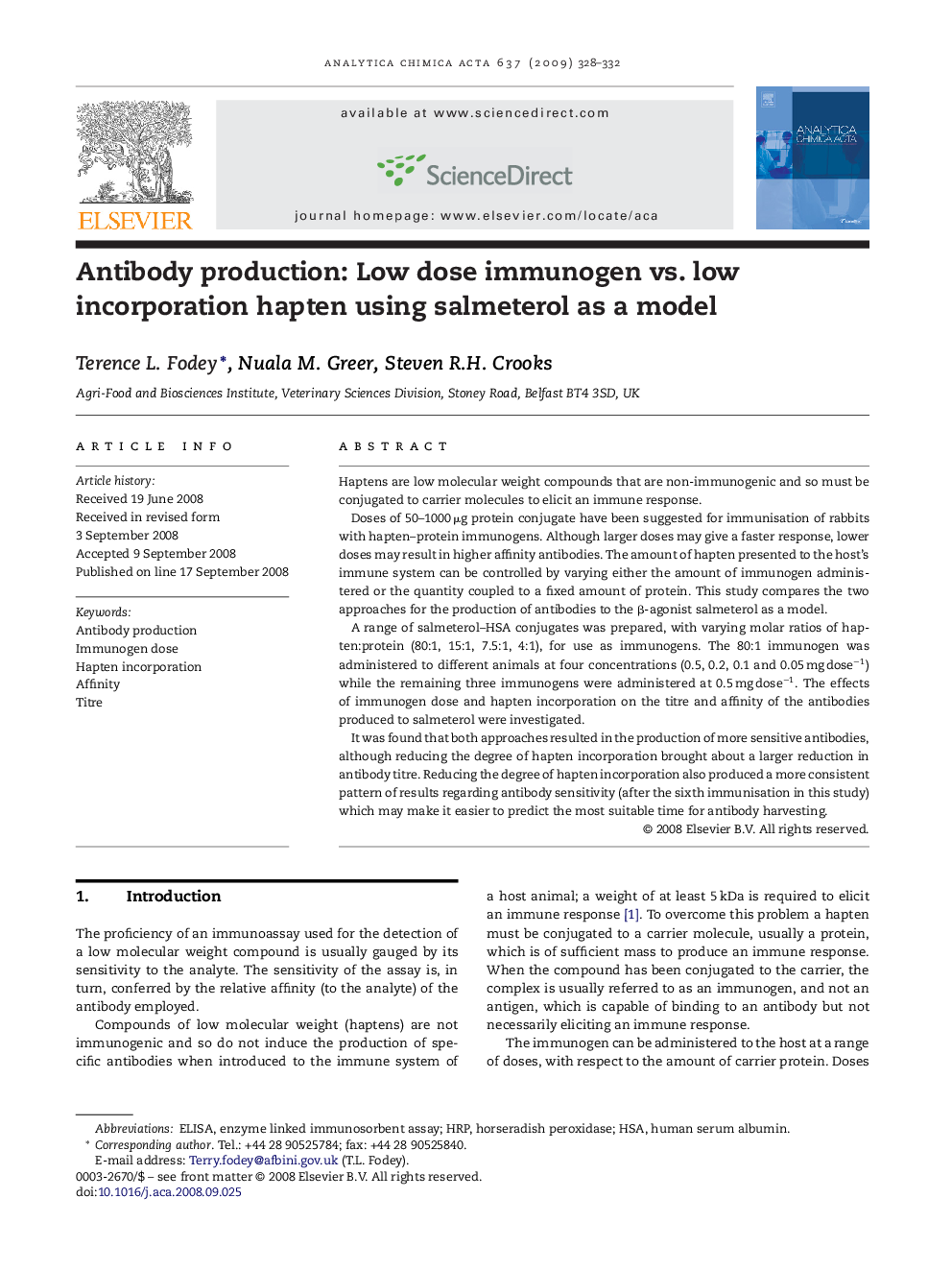| Article ID | Journal | Published Year | Pages | File Type |
|---|---|---|---|---|
| 1169209 | Analytica Chimica Acta | 2009 | 5 Pages |
Haptens are low molecular weight compounds that are non-immunogenic and so must be conjugated to carrier molecules to elicit an immune response.Doses of 50–1000 μg protein conjugate have been suggested for immunisation of rabbits with hapten–protein immunogens. Although larger doses may give a faster response, lower doses may result in higher affinity antibodies. The amount of hapten presented to the host's immune system can be controlled by varying either the amount of immunogen administered or the quantity coupled to a fixed amount of protein. This study compares the two approaches for the production of antibodies to the β-agonist salmeterol as a model.A range of salmeterol–HSA conjugates was prepared, with varying molar ratios of hapten:protein (80:1, 15:1, 7.5:1, 4:1), for use as immunogens. The 80:1 immunogen was administered to different animals at four concentrations (0.5, 0.2, 0.1 and 0.05 mg dose−1) while the remaining three immunogens were administered at 0.5 mg dose−1. The effects of immunogen dose and hapten incorporation on the titre and affinity of the antibodies produced to salmeterol were investigated.It was found that both approaches resulted in the production of more sensitive antibodies, although reducing the degree of hapten incorporation brought about a larger reduction in antibody titre. Reducing the degree of hapten incorporation also produced a more consistent pattern of results regarding antibody sensitivity (after the sixth immunisation in this study) which may make it easier to predict the most suitable time for antibody harvesting.
